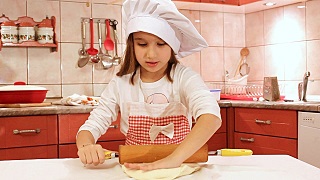From Guest Blogger Diana Smith: How to Turn Your Kitchen into an Eco-Friendly Oasis

Decorate with natural materials
For your kitchen decoration, you can always use natural and eco-friendly materials like bamboo, cork, recycled glass and stone or natural fabrics. Bamboo is perfect for flooring, backsplashes and different cutting boards and cutlery. Cork is another great solution for eco-friendly kitchens. It’s hypoallergenic, absorbs sound and is resistant to all kinds of molds and fungi. You can also get your countertops made out of recycled glass or stone chips. Those countertops resemble granite, limestone or soapstone, but are more eco-friendly and cheaper. You can also use many different natural fabrics such as cotton or wool for shades, chairs and tablecloths, and spare the environment hazardous chemicals in man-made fabrics.
Make a recycling station in your kitchen
The easiest way to get into recycling is to place separate bins right in your kitchen. You cabinets need just a little adjustment to fit the bins and that’s all. If you’re serious about recycling, you can also add a composting bin to your kitchen. This requires a little more time investment, because compost must be regularly treated with vegetables, protein and baking soda to keep it odorless. But all in all, if you have the time, this is a great way to be eco-friendly.
Don’t forget the lighting
If your kitchen gets a lot of natural light during the day then you’re in luck, but most of the kitchens need a little help from the bulbs. To maximize natural light you can paint cabinets white and make sure nothing is blocking the windows. When you need to use the artificial lighting, use energy-efficient LEDs that use up to 50% less electricity than regular bulbs.
Clean with green products
Regular cleaning products are based on petrol, and they contain a never-ending list of chemicals that you don’t want to introduce to your home. Today there are many natural cleaning products that are non-toxic, plant-based and completely biodegradable. You can also try a little DIY and make your own cleaning products that you’ll know are natural. By the way, vinegar, lemon and baking soda are amazing cleaners and they are 100% non-toxic.
Make sure everything is in working condition
Broken appliances and drippy faucets waste a lot of energy, water and money. Check all faucets for leaks and see if your appliances are in perfect working condition. If your ILVE appliances need their regular maintenance, you can always rely on a repair technician to check them out. Don’t rush to buy new appliances if your old ones still work. If your old kitchen appliances really can’t be fixed, dispose of them properly. Many communities have strict rules about the disposal of appliances, because they most likely contain many chemicals that are bad for the environment. Also, some manufacturers will take their old appliances for recycling when you buy new products from them.
Energy star appliances
If it’s time to buy new appliances look for the blue label of Energy Star. Energy Star appliances are government approved as the most energy-efficient appliances that save energy and utility bills. There are stoves, dishwashers, refrigerators and freezers that carry an Energy Star label and 80% of all appliances today have it, so you won’t have to look to hard.
The market for eco-friendly and green products and appliances is fortunately getting bigger and bigger by year. Many people decide to cut down their waste production, use renewable energy sources and make their homes (and kitchens) eco-friendly. You can join those people with these simple, yet efficient ways to make your kitchen a greener place.
